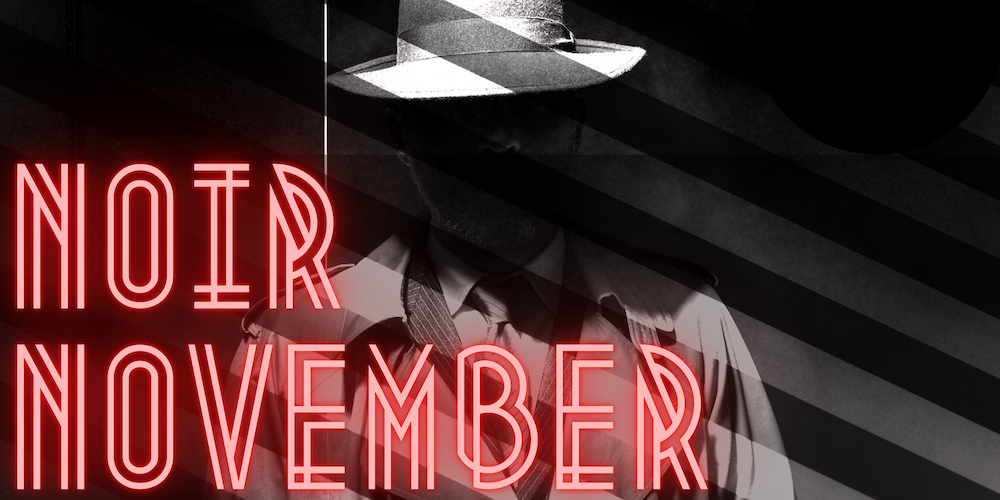Noir November: Shoot the Piano Player
Written by Cameron Geiser
Every day for the month of November, Cameron Geiser is reviewing a noir film (classic or neo) for Noir November. Today covers François Truffaut’s French New Wave answer, Shoot the Piano Player.
Now we’re getting to the really fun stuff. The first half of Noir November focused on the classics of the genre and other notable entries to give a good foundation on what the best of Hollywood’s Golden Age could produce. Now that we’re entering the 60’s, we’re traveling across the Atlantic and heading to France to see how Noir was adapted across cultures. Shoot The Piano Player was the first French film to really capture my imagination, it endeared me to the French ‘New Wave’ filmmakers far more than Breathless (my first French New Wave Film) did. Which isn’t to say that I disliked that film, Shoot The Piano Player simply kept my attention far easier. Perhaps this is due to Truffaut wanting to showcase the influence American films had on his work, or because of its non-linear story structure that reveals character development and evolution through elaborate flashbacks. Either way, I rather enjoyed this film by Truffaut.
The film opens with a man in a trenchcoat being pursued for unknown reasons through the streets of Paris at night. We get a short conversation between the man and a stranger who’s helped him off his feet after a short tumble. They stride in a casual pace and ponder the intricacies of love and marriage before the stranger turns off another street and our focus rips back into a hurried flurry as our man enters a small, dingy, jazz bar filled with dancing patrons. There we discover that the man we’ve followed here is Chico Saroyan (Albert Rémy), brother of the pianist Charlie Kohler (Charles Aznavour), who is irked when Chico flippantly calls him Edouard in a teasing manner. Chico’s on the run from a couple of gangsters that he’d scammed out of their share of a heist, and they’re onto him. He pleads for Charlie’s help, but Charlie’s uninterested- he left his family behind a while ago- but he still stalls the two thugs when they barge into the bar anyways. Eventually the two gangsters track down Charlie and the waitress Léna (Marie Dubois) from the bar, as they saw him with her later that night, and they nab both off the street at gunpoint. They escape with the help of an inquiring police officer and flee before the film takes a huge flashback that encompasses most of the second act. Léna then takes Charlie back to her apartment to hide out where she reveals that she always knew of his past as Edouard Saroyan, famous piano player that sold out concert halls all over Paris.
A climactic scene from Shoot the Piano Player.
We’re then treated to a lengthy deep dive into Edouard’s past as he began practicing piano, courted a waitress named Thérèse (Nicole Berger) at a local diner and eventually married her before he got famous as a world class performer. Eventually they grow apart as the wealth and fame went to Edouard’s head as they continually fight over seemingly trivial issues that are actually clues to the much deeper issues growing between them. A few surprising reveals later and we discover the source of Edouard’s inner sadness and general melancholy towards the world around him before cutting back to the present. After they decide to quit the bar life Edouard and Léna work towards rescuing Fido (Richard Kanayan), the youngest Saroyan brother from the two gangsters.
Unfortunately for them, Plyne (Serge Davri) the lummox tending the bar, has become enraged at Edouard’s advances toward Léna. A fight then breaks out between them that ends in the back alley with Edouard stabbing a knife into Plyne’s back! Though Edouard had tried to stop the fight, Plyne would not yield. Thus, with blood on his hands, Edouard decides to head out to the old Saroyan farmhouse with Chico and Richard (Jean-Jacques Aslanian), the eldest Saroyan brother. It’s not long before the two gangsters arrive with Fido in tow to confront Chico and retrieve their portion of the stolen money. There’s a shootout in the snow and everything essentially gets resolved with Léna informing Edouard that the police absolved him of his crimes as multiple neighbors had seen him try to stop Plyne in the fight. It was self defense after all. Unfortunately, Léna got caught in the ensuing crossfire and didn’t make it back to Paris. Fido was reunited with his brothers though. The film ends with Edouard returning to that same dingy dive bar and sitting back down at his crummy piano to play once more, while staring blankly into space as the film fades out.
This film had a more playful edge than expected, despite heavy plot points throughout the runtime, but I believe this helped to buoy the film more evenly as a whole. You can definitely see the influence of American Noir films here in Truffaut’s second film, but more specifically you can feel the presence of Alfred Hitchcock clearly and knowingly. So while this is most certainly a French film in the 1960s (i.e. Multiple instances of smoking in bed, sensations of nihilism sparking into poetic manifestos before swinging back into nonchalance, and a very loose and undefinable playfulness when concerned with intimacy and sexuality), you can rest assured that the film has a destination at the end. Which might just be preference, but it worked for me! Check this one out!
Cameron Geiser is an avid consumer of films and books about filmmakers. He'll watch any film at least once, and can usually be spotted at the annual Traverse City Film Festival in Northern Michigan. He also writes about film over at www.spacecortezwrites.com.






